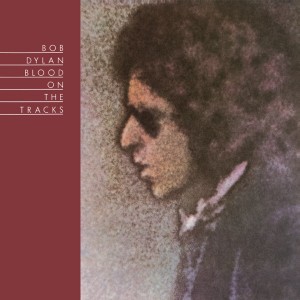Bob Dylan
Blood On The Tracks - Vinyl Reissue

- Record Label
- Columbia Records
About this item
Possibly the best 'break-up' album ever made, a heartfelt classic!
Bob Dylan was at several crossroads in the mid-1970s. Artistically, he was largely written off as being past his prime. Emotionally, he was suffering through a painful divorce from his then-wife Sara Lowndes. Creatively, he appeared at a stalemate, his previous decade’s unprecedented run of transformational brilliance finished. Then came Blood on the Tracks.
A start-to-finish cycle that documents a lover’s pursuit of, entanglement with, and loss of a woman, the bracingly intimate 1975 effort remains one of the most encompassing break-up albums ever made and ranks as the most personal statement of the Bard’s career. To hear it is to experience the agony, frustration, trauma, highs, lows, confusion, sadness, and, ultimately, requisite redemption associated with intimate relationships gone astray. Dylan maintains it’s a work of fiction, but it’s evident close-vested autobiographical premise is what helps make it universal: It’s the icon singing through tears, going out of his mind, battling hallowing emptiness, firing shots across the bow, and accepting culpability. It is, in short, a consummate expression of love’s darker sides and the consequences of what happens when dreams unravel.
For all the melancholic pain, unresolved questions, shattered memories, wasted times, unrequited dialogs, and weary regret within, Blood on the Tracks remains as daring as it is reflective. Rather than follow for a monotone caustic vibe, Dylan’s songs burrow into the subconscious for the manners in which they are even-keeled, mellow, and occasionally, even peaceful. Dignity, honor, poignancy, and fairness—all traits uncommon in any situation in which partners dissolve histories, change hearts, and attribute blame—instill the record with equilibrium on par with the consistency of the flowing melodies.
Throughout, tunes come on and proceed as if they could continue forever, Dylan spinning poetic verses and conversations amidst finely tied knots of acoustic notes, chords, and fills, the deceivingly simple architecture conjuring the intertwined refractions of a bezeled jewel, various angles, colors, and textures conjoining into a gorgeously inseparable whole. Backed by Tony Brown’s flexible albeit subtle bass, Buddy Cage’s country-streaked pedal-steel guitar, and Paul Griffin’s soul-baring organ—an instrument used to shadow, tuckpoint, and illuminate here as effectively as any time in rock history—Dylan pours soulful emotion, open his veins, and bleeds.
